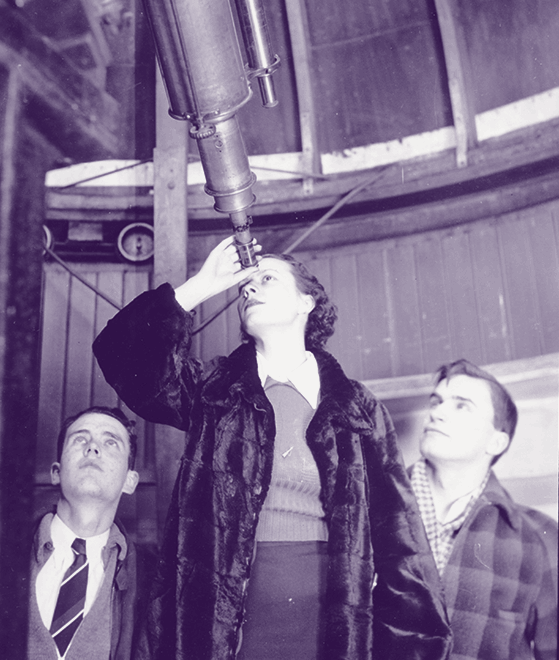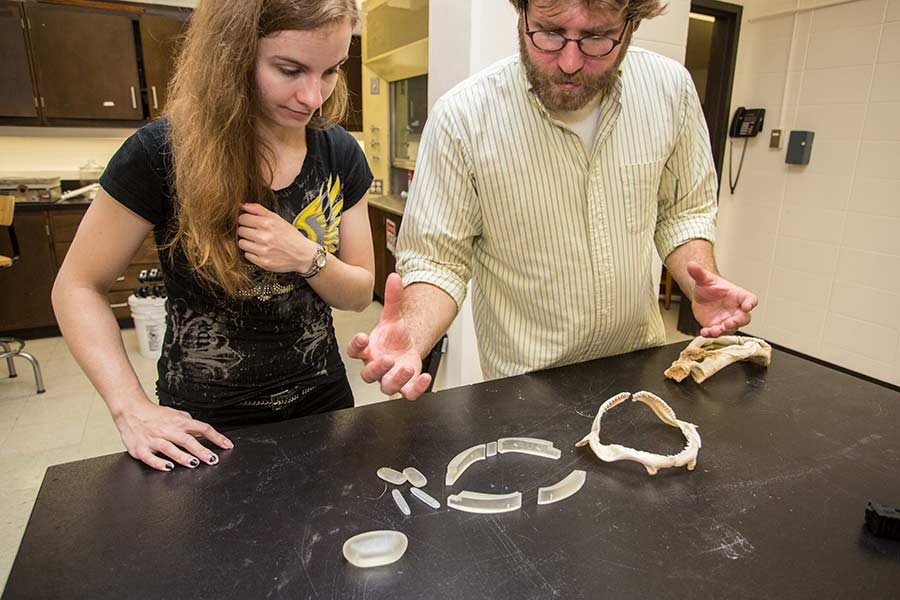

NSF Grant Buys a Whole Lot of Microscope
by Tricia Duke '19
A $188,000 National Science Foundation grant will help students gain a more in-depth understanding of the world through the purchase of a Scanning Electron Microscope (SEM).
"Katherine Adelsberger [environmental studies], Esther Penick [neuroscience], Andrew F. Mehl [chemistry], and Nicholas J. Gidmark [biology] deserve high praise for landing this award," said Mike Schneider, interim vice president for Academic Affairs and dean of the College, thanking a few of the many faculty who contributed to the grant proposal. "This $188,000 will buy a whole lot of microscope."
Adelsberger, Douglas and Maria Bayer Endowed Chair in Earth Science and lead writer for the grant, explained the new instrument's significance." The difference between an electron microscope and a regular light microscope is that you're limited as to how small you can look by the wavelength, and light has a way bigger wavelength than electron beams. It's the difference between 400 nanometers and 0.2," she said.
In her research, this is the difference between knowing that a rock has interesting layered structures and knowing that a rock was constructed, elemental layer by elemental layer, by thousands of years worth of hard-working microbes.
For her students, the detail afforded by this microscope (with the add-on of an Energy Dispersive X-Ray Spectrometer, which is also included in the grant) shows the difference between being able to examine a rock's basic physical properties and being able to read the rock's elemental history using x-ray spectra.
Environmental studies students are not the only students who will benefit from the SEM. In Assistant Professor of Biology Nicholas Gidmark's Comparative Anatomy class, students will be able to hold in their hands, move, disassemble and reassemble models of fish jaws they would otherwise have to squint to see.
Through computer software, Gidmark and other faculty can turn a series of images into a computer model, which can then be upscaled or downscaled and printed using Knox's 3D printer. Already, Gidmark says, the plastic models made from normal photographs help students reach "aha" moments. With the SEM, the models will be able to show even more detail.
Gidmark gave the example of a model in which some of the inner rows of tiny teeth are formed incorrectly. "You can see here, this is the kind of detail the new microscope will get," he said.
Assistant Professor of History Danielle Fatkin also expressed excitement about how the microscope could affect her research in Dhiban, Jordan.
"I'm planning on using the SEM to look at some ceramics from my archaeological site," said Fatkin. "It's a whole new research avenue for me."
The archaeological site in Dhiban, Jordan, is a collaboration across departments and nations with the involvement of both faculty and students. During summer trips to the site, students learn many aspects of archaeology, including the processing of items found in the dig.
The new instrument is the next step in that process, when the items found by students and faculty can be placed into larger historical narratives. As an example, Adelsberger displayed a plaster sample from the site.
"With plaster samples from Jordan—they built a wall, and they plastered the inside," Adelsberger said, referring to what researchers believe is a reservoir from the Iron Age. "So when they put it on, did they put it on in small layers? Or all at once?"
The SEM will be installed and students will have the opportunity to begin using the new instrument during the 2018-2019 academic year.
Pictured above, a student examines ancient pottery found in Dhiban, Jordan. Below, Professor Nick Gidmark shows a student plastic, printed models of a fish jaw.
Published on March 05, 2018


